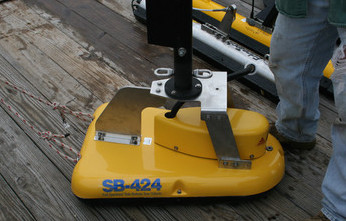 Sub-bottom marine profiler (SBP) is a geophysical method which is specifically designed to detect and characterize layers of sediment or rock beneath a body of water. SBP provides continuous seismic reflection profiles in real time by the use of an acoustic wave generating source and an array of hydrophones to receive the energy reflected by the various interfaces.
Sub-bottom marine profiler (SBP) is a geophysical method which is specifically designed to detect and characterize layers of sediment or rock beneath a body of water. SBP provides continuous seismic reflection profiles in real time by the use of an acoustic wave generating source and an array of hydrophones to receive the energy reflected by the various interfaces.
Sub-bottom profilers are typically used in geological and geophysical exploration surveys, marine construction projects, and route surveys for pipeline laying projects.
[x_callout type=”left” title=”Looking for a Solution?” message=”A comprehensive understanding of what lies beneath the surface within the confines of your project area matters. Encountering unforeseen subsurface features can be detrimental to your overall project budget and completion schedule.” button_text=”Contact Us Now” button_icon=”phone-square” href=”https://surfacesearch.com/contact-2/”]

